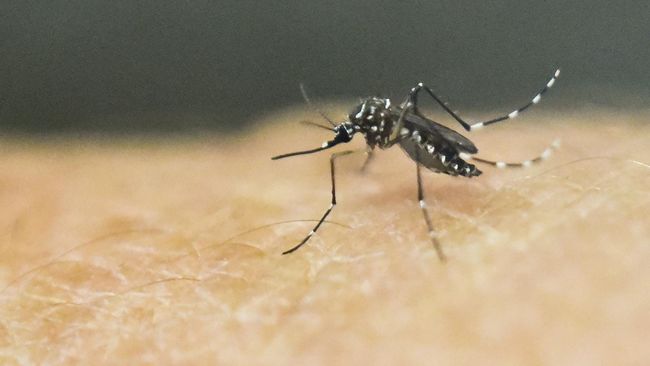Jakarta, CNN Indonesia –
Notre Dame University research shows light pollution has changed biting habits the Aedes Aegypti mosquito. Researchers claim that Aedes Aegypti, which normally fly and bite in the morning and evening, become more active at night.
The increased behavior of the Aedes Aegypti mosquito at night due to light pollution can have an impact on the increase in disease transmission, such as dengue fever, yellow fever, chikungunya, and Zika.
launching Science Daily, Aedes Aegypti evolved with humans. So that mosquitoes prefer to bite humans than animals such as other types of mosquitoes that emerge from the forest. This is why their increased activity threatens public health.
“This has the potential to be a very valid problem that shouldn’t be ignored. They live and breed around the house, so the possibility of Aedes Aegypti being exposed to light pollution is very likely to occur, “said Giles Duffield, a researcher. in the Department of Biological Sciences at the University of Notre-Dame.
By identifying the impact of light pollution on Aedes Aegypti’s lifestyle, Department of Biological Sciences research scientist and study lead author Samuel SC Rund allowed mosquitoes in cages to bite one another. arm under controlled condition.
This is done during the day, at night without artificial light and at night with the addition of artificial light.
As a result, the biting mosquito was identified as a female mosquito and it was observed that it was twice as likely to bite at night in the presence of artificial light. Overall, about 29% of mosquitoes in the control group without lighting ate at night without artificial lighting.
So far, 59% appear to suck blood when exposed to artificial light.
launching Science TimesThe researchers hope the results will help epidemiologists better understand the real risk of disease transmission from this species of mosquito. The results could also lead to more recommendations for the use of bed nets.
The reason is, mosquito nets are generally used at night to ward off other types of mosquito bites, namely anopheles. However, because Aedes Aegypti has been shown to be stimulated by artificial light, mosquito nets can also be used in areas where disease transmission is likely, even with limited Anopheles activity.
“The impact of this research could be enormous. “Epidemiologists may want to take light pollution into account when predicting infection rates,” said Duffield.
Duffield and his colleagues plan to experiment with additional variable artificial light to further study the biting activity of Aedes Aegypti. These variables include light duration, intensity, color, and time of bite, either at the beginning of the night or after.
The research team is also interested in the molecular genetic pathways that may be involved in biting activity, having noticed that not all mosquitoes in the study population are attracted to bites at night even with artificial light. .
“So we think there is a genetic component to the Aedes Aegypti species,” said Duffield.
(jps / DAL)
–


